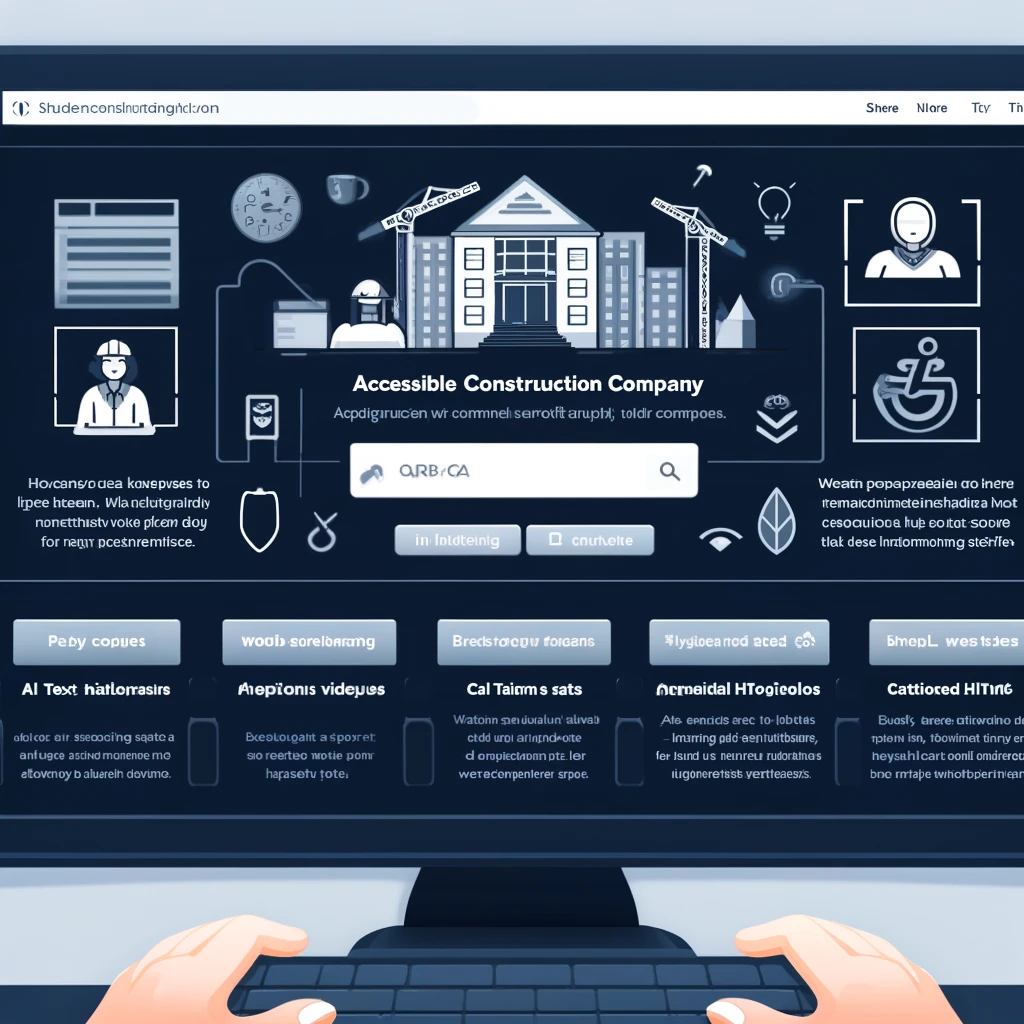Introduction

Hey there! Making your construction company’s website accessible isn’t just about broadening your audience—it’s also about compliance and ethical responsibility. In a world where digital access is a key part of everyday life, ensuring that everyone, including people with disabilities, can access your services online is crucial. Let’s dive into what web accessibility means for your construction business and how you can ensure your site meets the necessary standards.
Understanding Web Accessibility
Web accessibility means that websites are designed and developed so that all people, including those with disabilities, can use them. This includes individuals with impairments related to vision, hearing, mobility, and cognition. The Web Content Accessibility Guidelines (WCAG) are part of a series of web accessibility guidelines published by the Web Accessibility Initiative (WAI) of the World Wide Web Consortium (W3C), the main international standards organization for the Internet.
Common Accessibility Issues in Construction Websites
Many construction websites may unintentionally exclude users due to design or content issues. Common pitfalls include:
- Poor Color Contrast: Text and background colors that do not have enough contrast can be hard to read for those with vision impairments.
- Lack of Keyboard Navigation: Websites that can only be navigated through a mouse can exclude users who rely on keyboard navigation.
Steps to Ensure Compliance
Ensuring your website is accessible involves a few key steps:
- Accessibility Audit: Review your site to identify non-compliance issues.
- Implement Changes: Make necessary updates, such as:
- Adding text descriptions for images (alt text).
- Ensuring all video content has captions.
- Using semantic HTML to structure content properly.
Tools and Resources for Accessibility
There are numerous tools and resources available to help you improve your website’s accessibility:
- Automated Testing Tools: Software like Axe or WAVE can scan your website and identify accessibility issues.
- Professional Consultation: Consider hiring an accessibility consultant for a more thorough approach.
Benefits of an Accessible Website
Creating an accessible website has several significant benefits:
- Enhanced User Experience: An accessible website provides a better experience for all users, not just those with disabilities.
- SEO Benefits: Many accessibility improvements, like semantic HTML and alt text, can also boost your SEO.
- Legal Compliance: Avoid legal issues related to accessibility laws, which are increasingly being enforced.
Case Studies
For instance, a major construction firm revamped their website to meet WCAG standards and saw an increase in both site visits and customer satisfaction, demonstrating the value of accessibility.
Conclusion
Accessibility should be a key consideration in your digital strategy, not an afterthought. By making your construction website accessible, you’re not only opening your doors wider to a broader audience but you’re also building a reputation as a socially responsible business. Ready to get started? Your users—and your conscience—will thank you!